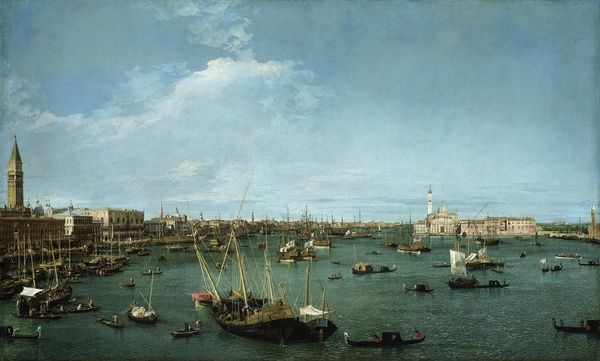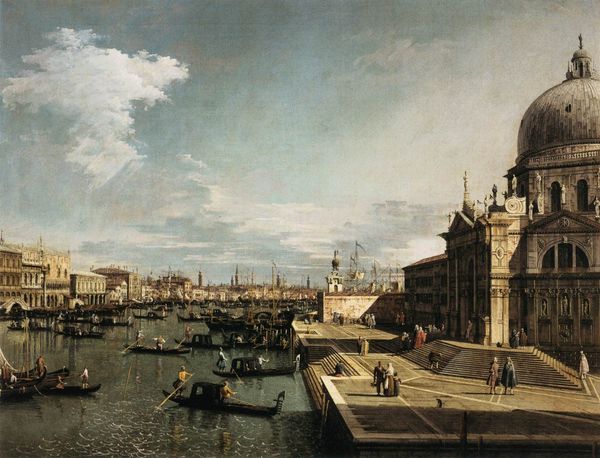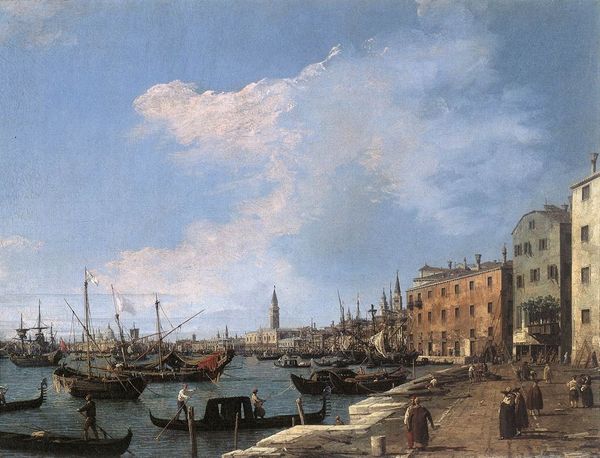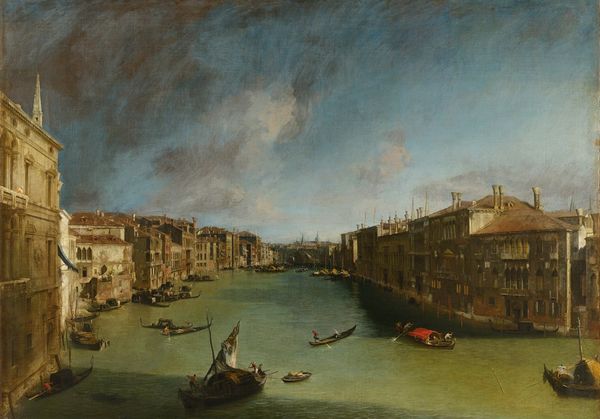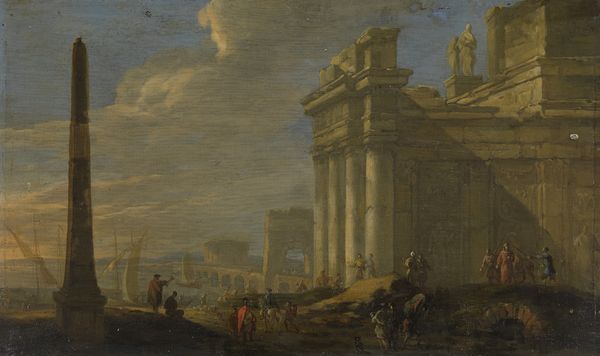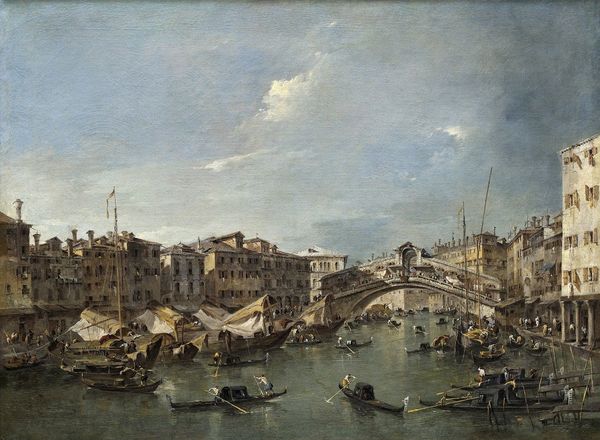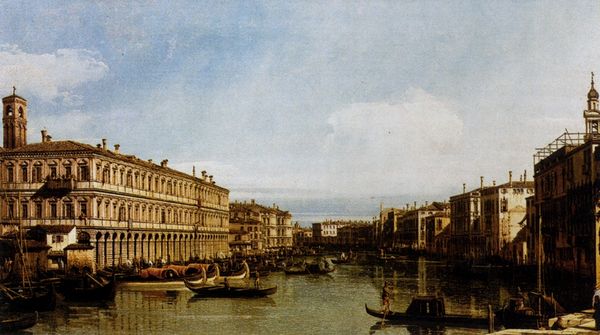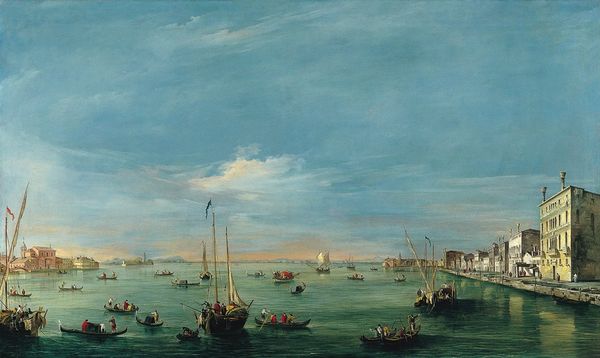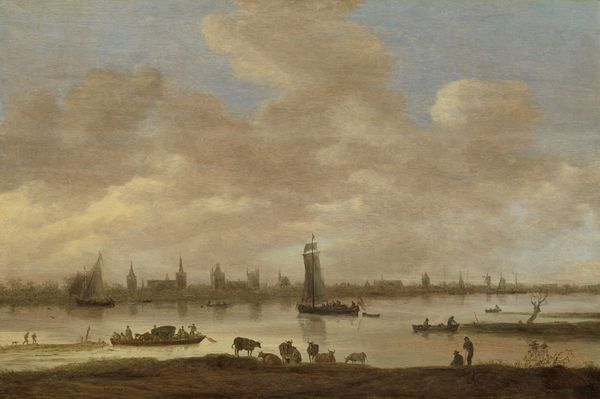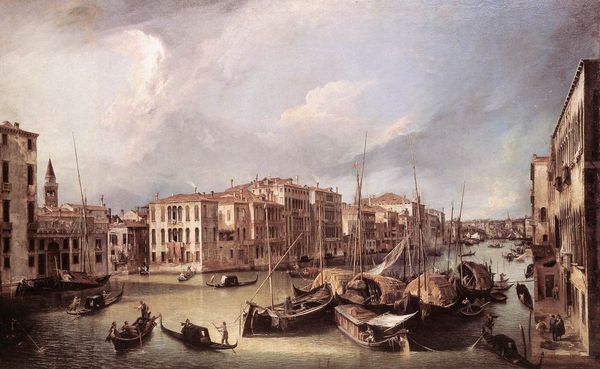
Dimensions: 73 × 119.4 cm (28 3/4 × 47 in.)
Copyright: Public Domain
Editor: Here we have Francesco Guardi's "The Grand Canal, Venice," an oil-on-canvas painting from around 1760. The composition feels very open, almost like the city is breathing. How do you interpret this work, particularly in relation to its structure and materiality? Curator: Considering its formal elements, observe how Guardi employs a high horizon line, a compositional strategy that emphasizes the atmospheric expanse above. The subtle gradations in the sky, rendered with delicate brushwork, create a sense of depth and imbue the scene with a certain transience. Notice the contrasting textures; the solidity of the architectural forms against the fluid reflections in the water. Do you perceive any geometric underpinnings to his composition, perhaps in the way he organizes the buildings and waterways? Editor: I see that, yes! The buildings almost form a diagonal line, and the water has this lovely horizontal pull, grounding the scene. The light and shadow on the buildings give them a sense of volume too. Does the loose brushwork relate to the Baroque style at all? Curator: Precisely. The painterly application of the oil-paint aligns with the Venetian Baroque aesthetic of his period, emphasizing the interplay of light and texture, and, in turn, generating atmospheric conditions as a principal effect. One can compare and contrast it to the sharper architectural outlines within Canaletto's contemporaneous depictions of Venice. Editor: That's interesting; I can definitely see how it is more subtle. I'm really appreciating Guardi's attention to these subtleties now, and how they define the whole experience of looking at the painting. Curator: Indeed, his method invites one into an optical, sensorial exploration of place as a mode of being in time.
Comments
No comments
Be the first to comment and join the conversation on the ultimate creative platform.
